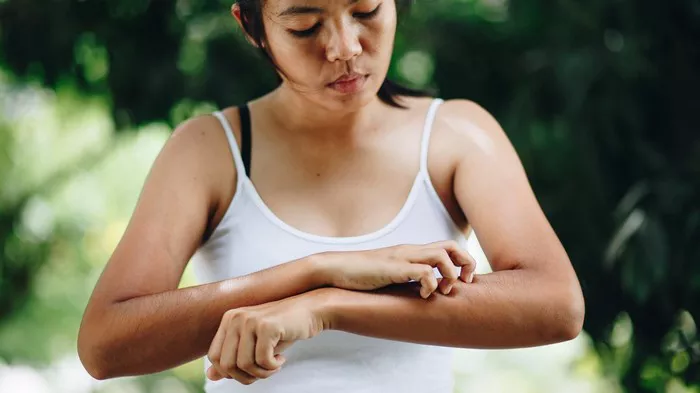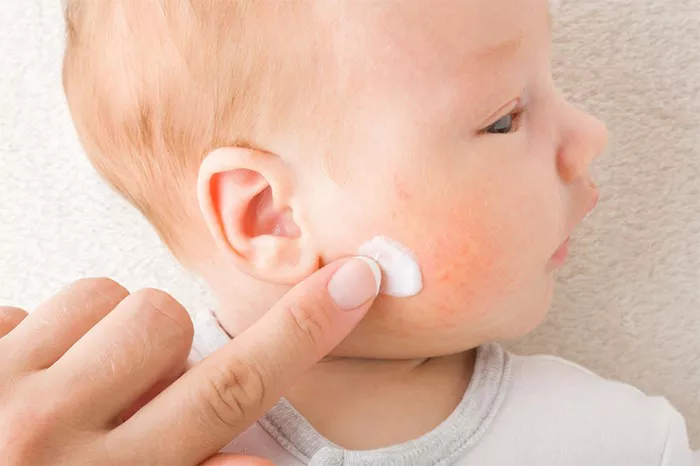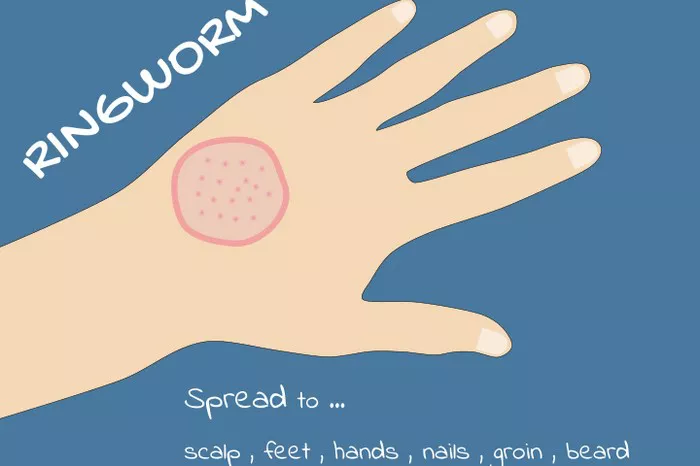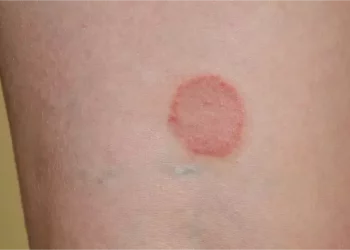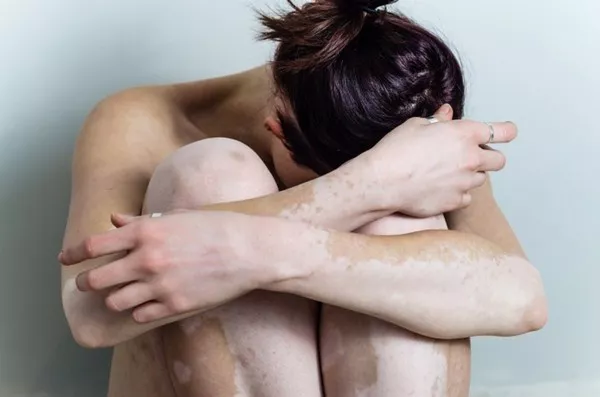Ringworm, also known as tinea, is a common fungal infection that affects the skin, hair, and nails. Despite its name, ringworm is not caused by a worm but by a group of fungi called dermatophytes. These fungi thrive in warm, moist environments and can infect both humans and animals. A prevalent misconception about ringworm is that it is caused by being dirty. In this article, we will explore the causes of ringworm, debunk the myth that it is a result of poor hygiene, and provide insights into its prevention and treatment.
Understanding Ringworm
Ringworm manifests as a red, circular, itchy rash with clearer skin in the middle, resembling a ring. It can appear on various parts of the body, including the scalp (tinea capitis), feet (tinea pedis or athlete’s foot), groin area (tinea cruris or jock itch), and nails (tinea unguium or onychomycosis).
Causes of Ringworm
Ringworm is caused by dermatophytes, which are fungi that feed on keratin, a protein found in the skin, hair, and nails. The three main genera of dermatophytes responsible for ringworm infections are Trichophyton, Microsporum, and Epidermophyton. These fungi can be transmitted through:
1. Direct Contact: Ringworm can spread through direct skin-to-skin contact with an infected person or animal.
2. Indirect Contact: The fungi can survive on surfaces and objects such as clothing, towels, bedding, combs, and floors. Touching these contaminated items can lead to infection.
3. Environmental Sources: Dermatophytes thrive in warm, moist environments like locker rooms, public showers, and swimming pools. Walking barefoot in these areas can increase the risk of infection.
Debunking the Myth: Ringworm and Hygiene
The notion that ringworm is caused by being dirty is a myth. While poor hygiene can contribute to the spread of ringworm, it is not the root cause of the infection. Here’s why:
1. Fungal Nature: Ringworm is a fungal infection, not a result of dirt or uncleanliness. Dermatophytes can infect anyone, regardless of their hygiene practices.
2. Transmission Methods: Ringworm spreads through contact with the fungi, which can occur in various settings, including clean environments. For example, athletes who use shared equipment or facilities are at risk despite maintaining good personal hygiene.
3. Susceptibility Factors: Certain factors increase the risk of ringworm, such as a weakened immune system, excessive sweating, and minor skin injuries. These factors are unrelated to cleanliness.
Factors Contributing to Ringworm Infections
Several factors can predispose individuals to ringworm infections. Understanding these factors can help in prevention and management.
1. Warm and Humid Conditions: Dermatophytes thrive in warm, humid environments, making areas like tropical climates, locker rooms, and public showers common places for ringworm transmission.
2. Skin-to-Skin Contact: Activities involving close physical contact, such as sports, can facilitate the spread of ringworm.
3. Shared Personal Items: Sharing clothing, towels, hairbrushes, or sports equipment can transfer the fungi from one person to another.
4. Weakened Immune System: Individuals with weakened immune systems, such as those with diabetes or HIV/AIDS, are more susceptible to fungal infections, including ringworm.
5. Pets: Animals, especially cats and dogs, can carry dermatophytes and transmit them to humans. Farmers and veterinarians who work with animals are at higher risk.
Preventing Ringworm
Prevention strategies focus on minimizing exposure to the fungi and maintaining healthy skin conditions. Here are some effective measures:
1. Maintain Personal Hygiene: Regularly wash and dry your body thoroughly, especially after sweating or using public facilities. Pay attention to skin folds, feet, and the groin area.
2. Avoid Sharing Personal Items: Do not share clothing, towels, hairbrushes, or sports equipment with others. Use your own items and ensure they are clean and dry.
3. Wear Protective Footwear: Use flip-flops or shower shoes in communal areas such as locker rooms, public showers, and swimming pools to reduce the risk of fungal exposure.
4. Keep Skin Dry and Clean: Fungi thrive in moist environments, so keep your skin dry and clean. Change out of sweaty or wet clothing promptly and wear moisture-wicking fabrics.
5. Treat Infected Pets: If you suspect your pet has ringworm, seek veterinary care and minimize contact until the infection is treated.
6. Boost Immune Health: Maintain a healthy lifestyle to support your immune system. Eat a balanced diet, exercise regularly, and get adequate sleep.
SEE ALSO: Will Ringworm Eventually Go Away?
Treating Ringworm
Ringworm can usually be treated effectively with antifungal medications. The type and duration of treatment depend on the severity and location of the infection.
1. Topical Antifungals: Over-the-counter (OTC) antifungal creams, lotions, or powders can treat mild to moderate ringworm. Common active ingredients include clotrimazole, miconazole, and terbinafine. Apply the medication directly to the affected area as directed on the packaging.
2. Prescription Antifungals: For more severe or persistent infections, a doctor may prescribe stronger topical or oral antifungal medications. Oral antifungals, such as terbinafine, itraconazole, or fluconazole, are often used for scalp or nail infections.
3. Proper Application: Ensure the affected area is clean and dry before applying topical treatments. Follow the full course of treatment to prevent recurrence, even if symptoms improve before completion.
4. Medical Consultation: Seek medical advice if the infection does not improve with OTC treatments, if it spreads to the scalp or nails, or if you have underlying health conditions that may complicate treatment.
Conclusion
Ringworm is a common fungal infection caused by dermatophytes, not by being dirty. While maintaining good personal hygiene is important in preventing the spread of ringworm, the infection can occur in clean environments and affect individuals regardless of their cleanliness. Understanding the causes and risk factors of ringworm can help dispel myths and promote effective prevention and treatment strategies. By adopting proper hygiene practices, avoiding shared personal items, and seeking timely medical treatment, individuals can minimize the risk of ringworm and manage infections effectively.
Related Topics:



